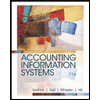
Intermediate Accounting
9th Edition
ISBN: 9781259722660
Author: J. David Spiceland, Mark W. Nelson, Wayne M Thomas
Publisher: McGraw-Hill Education
expand_more
expand_more
format_list_bulleted
Question
Chapter 3, Problem 3.15BYP
Requirement1:
To determine
Segment Reporting
Segment reporting is the reporting of the operating segment of several business of a company that facilitates the disclosures and analysis of financial statements.
To Determine: The purpose of operating segment disclosure.
Requirement 2:
To determine
To define: Operating segment.
Requirement 3:
To determine
The amounts to be reported by operating segment.
Requirement 4:
To determine
To prepare: Segment reporting according to IFRS for Corporation L.
Expert Solution & Answer
Want to see the full answer?
Check out a sample textbook solution
Students have asked these similar questions
ned help this questions
Please given answer
None
Chapter 3 Solutions
Intermediate Accounting
Ch. 3 - Prob. 3.1QCh. 3 - Prob. 3.2QCh. 3 - Define current assets and list the typical asset...Ch. 3 - Prob. 3.4QCh. 3 - Prob. 3.5QCh. 3 - Prob. 3.6QCh. 3 - Describe the common characteristics of assets...Ch. 3 - Prob. 3.8QCh. 3 - Prob. 3.9QCh. 3 - Define the terms paid-in-capital and retained...
Ch. 3 - Disclosure notes are an integral part of the...Ch. 3 - A summary of the companys significant accounting...Ch. 3 - Define a subsequent event.Ch. 3 - Prob. 3.14QCh. 3 - Prob. 3.15QCh. 3 - Prob. 3.16QCh. 3 - Prob. 3.17QCh. 3 - Show the calculation of the following solvency...Ch. 3 - Prob. 3.19QCh. 3 - Prob. 3.20QCh. 3 - (Based on Appendix 3) Segment reporting...Ch. 3 - Prob. 3.22QCh. 3 - Prob. 3.23QCh. 3 - Current versus long-term classification LO32,...Ch. 3 - Balance sheet classification LO32, LO33 The trial...Ch. 3 - Prob. 3.3BECh. 3 - Balance sheet classification LO32, LO33 Refer to...Ch. 3 - Balance sheet classification LO32, LO33 The...Ch. 3 - Balance sheet classification LO32, LO33 You have...Ch. 3 - Balance sheet preparation; missing elements LO32,...Ch. 3 - Financial statement disclosures LO34 For each of...Ch. 3 - Calculating ratios LO38 Refer to the trial...Ch. 3 - Prob. 3.10BECh. 3 - Calculating ratios; solving for unknowns LO38 The...Ch. 3 - Balance sheet; missing elements LO32, LO33, LO38...Ch. 3 - Balance sheet classification LO32, LO33 The...Ch. 3 - Balance sheet classification LO32, LO33 The...Ch. 3 - Balance sheet preparation LO32, LO33 The...Ch. 3 - Balance sheet preparation LO32, LO33 The...Ch. 3 - Balance sheet; Current versus long-term...Ch. 3 - Prob. 3.7ECh. 3 - Prob. 3.8ECh. 3 - Balance sheet preparation LO32, LO33 The...Ch. 3 - Financial statement disclosures LO34 The...Ch. 3 - Prob. 3.11ECh. 3 - Prob. 3.12ECh. 3 - Prob. 3.13ECh. 3 - FASB codification research LO32, LO34 Access the...Ch. 3 - Prob. 3.15ECh. 3 - Prob. 3.16ECh. 3 - Prob. 3.17ECh. 3 - Calculating ratios; solve for unknowns LO38 The...Ch. 3 - Prob. 3.19ECh. 3 - Effect of management decisions on ratios LO38...Ch. 3 - Prob. 3.21ECh. 3 - Prob. 3.22ECh. 3 - Balance sheet preparation LO32, LO33 Presented...Ch. 3 - Balance sheet preparation; missing elements LO32,...Ch. 3 - Balance sheet preparation LO32, LO33 The...Ch. 3 - Balance sheet preparation LO32, LO33 The...Ch. 3 - Balance sheet preparation LO32, LO33 The...Ch. 3 - Prob. 3.6PCh. 3 - Balance sheet preparation; errors LO32, LO33 The...Ch. 3 - Balance sheet; errors; missing amounts LO32, LO33...Ch. 3 - Balance sheet preparation LO32 , LO33 Presented...Ch. 3 - Prob. 3.10PCh. 3 - Communication Case 31 Current versus long-term...Ch. 3 - Analysis Case 32 Current versus long- term...Ch. 3 - Prob. 3.4BYPCh. 3 - Judgment Case 35 Balance sheet; errors LO32...Ch. 3 - Prob. 3.6BYPCh. 3 - Real World Case 37 Balance sheet and significant...Ch. 3 - Judgment Case 38 Post fiscal year-end e vents ...Ch. 3 - Prob. 3.9BYPCh. 3 - Prob. 3.10BYPCh. 3 - Prob. 3.11BYPCh. 3 - Analysis Case 314 Balance sheet information LO32...Ch. 3 - Prob. 3.15BYPCh. 3 - Ethics Case 316 Segment reporting Appendix 3 You...Ch. 3 - Prob. 1CCTC
Knowledge Booster
Similar questions
- Hello tutor solve this question accountingarrow_forwardDefine in detail the following in relation to Organizational Ethics. The Ethical Culture of an organization. Define these Five Signs of Ethical Collapse a) Pressure to maintain the numbers b) Fear of reprisals c) Loyalty to the boss d) Innovations e) Goodness in some areas, atones for evil in othersarrow_forwardCalculate the stock in the beginningarrow_forward
arrow_back_ios
SEE MORE QUESTIONS
arrow_forward_ios
Recommended textbooks for you
 Intermediate Accounting: Reporting And AnalysisAccountingISBN:9781337788281Author:James M. Wahlen, Jefferson P. Jones, Donald PagachPublisher:Cengage Learning
Intermediate Accounting: Reporting And AnalysisAccountingISBN:9781337788281Author:James M. Wahlen, Jefferson P. Jones, Donald PagachPublisher:Cengage Learning
 Financial Reporting, Financial Statement Analysis...FinanceISBN:9781285190907Author:James M. Wahlen, Stephen P. Baginski, Mark BradshawPublisher:Cengage Learning
Financial Reporting, Financial Statement Analysis...FinanceISBN:9781285190907Author:James M. Wahlen, Stephen P. Baginski, Mark BradshawPublisher:Cengage Learning Accounting Information SystemsFinanceISBN:9781337552127Author:Ulric J. Gelinas, Richard B. Dull, Patrick Wheeler, Mary Callahan HillPublisher:Cengage Learning
Accounting Information SystemsFinanceISBN:9781337552127Author:Ulric J. Gelinas, Richard B. Dull, Patrick Wheeler, Mary Callahan HillPublisher:Cengage Learning Fundamentals of Financial Management, Concise Edi...FinanceISBN:9781305635937Author:Eugene F. Brigham, Joel F. HoustonPublisher:Cengage Learning
Fundamentals of Financial Management, Concise Edi...FinanceISBN:9781305635937Author:Eugene F. Brigham, Joel F. HoustonPublisher:Cengage Learning

Intermediate Accounting: Reporting And Analysis
Accounting
ISBN:9781337788281
Author:James M. Wahlen, Jefferson P. Jones, Donald Pagach
Publisher:Cengage Learning


Financial Reporting, Financial Statement Analysis...
Finance
ISBN:9781285190907
Author:James M. Wahlen, Stephen P. Baginski, Mark Bradshaw
Publisher:Cengage Learning

Accounting Information Systems
Finance
ISBN:9781337552127
Author:Ulric J. Gelinas, Richard B. Dull, Patrick Wheeler, Mary Callahan Hill
Publisher:Cengage Learning

Fundamentals of Financial Management, Concise Edi...
Finance
ISBN:9781305635937
Author:Eugene F. Brigham, Joel F. Houston
Publisher:Cengage Learning